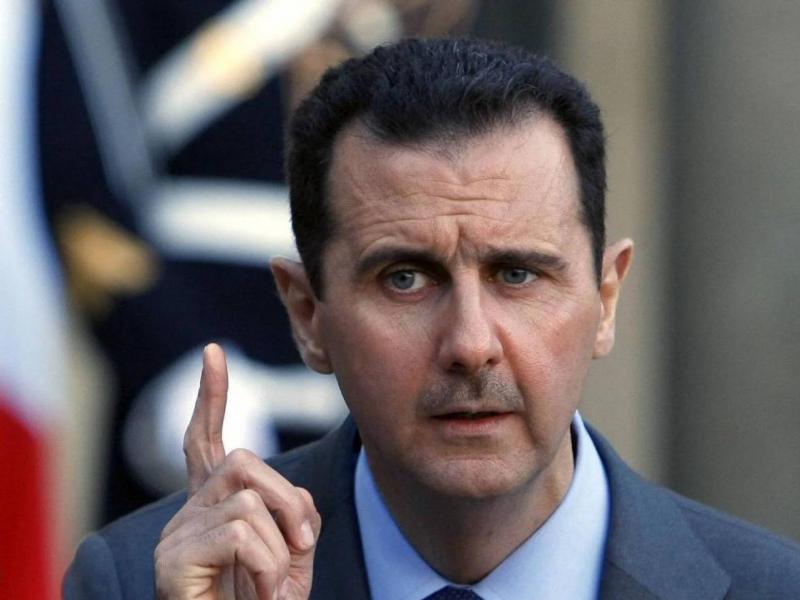In his recent speech, Hezbollah leader Hassan Nasrallah did not mention Syria as a "theater" of the "axis of resistance" that could engage or participate in a potential response to Israel. This is similarly true for Iran's statements, which controlling the strings from above, while its officials avoid referring to any potential role for the Syrian regime. This situation raises questions about whether Syria has become outside the "Iranian axis." It also highlights the reasons behind the state of "non-involvement," despite the messages recently emphasized by Iranian leader Ali Khamenei, stating that the identity of "resistant Syria" must be preserved.
Currently, attention is directed towards the nature of the "response" that Iran will execute following the assassination of Hamas leader Ismail Haniyeh in Tehran, and a similar move that Hezbollah may take against Israel after the killing of its prominent leader Fouad Shukr. Amid ongoing threats and the persistent analyses from observers and military experts predicting a "response" from various fronts, Syria is absent from the list of potential participants. The likely arenas do not extend beyond Iraq, Yemen, Iran, and Lebanon, as outlined by Nasrallah in his recent speech, considering that the situation is no longer limited to "supporting fronts" but has transformed into an "open war."
Prior to the war in Gaza waged by Israel following the October 7 attack, and after this date, Syria has faced a series of harsh Israeli airstrikes, the most notable being the attack on the Iranian consulate in the Syrian capital, Damascus, last April. Despite the Syrian regime being distant from any threat of retaliation or action after its territories were targeted by "the aggression," Iran took on the task and launched drones and ballistic missiles towards Israel, which announced it intercepted them 99 percent of the time.
The regime's conduct became clearer following the first day of Hamas's attack on Israel, coinciding with Israel's intent to carry out airstrikes and transfer weapons and supplies to the fronts with Gaza. While the regime did not engage in "threatening" retaliation or involve itself on "axis" fronts, it took the decision to prevent rallies and protests in support of Gaza against the ongoing Israeli war.
The situation recently reached a point where the regime did not comment on the escalations between Iran and Israel's proxies, changing its approach to Israeli strikes from countering them at the appropriate time and place to responding to the "aggression" with air defense systems, and ultimately only conveying news of losses and the general location of targets.
Has Assad exited the axis? According to Lebanese writer and journalist Munir Rabi, "it cannot be conclusively said that Syria has completely exited the Iranian axis." Rabi notes that "there is a desire to remain within the axis in a political sense, rather than a practical one." If the Syrian regime wanted to politically distance itself from Iran, Tehran along with Hezbollah remains in control and greatly influential in Syria, according to the Lebanese writer.
Syrian researcher Ayman al-Dasouqi at the Omran Center for Strategic Studies cites messages from several countries that reached the Syrian regime in recent months. He clarifies to Al-Hurra that these messages requesting the Syrian regime not to engage in regional events found a positive response from Bashar al-Assad.
The response was positive from the President of the Syrian regime, driven by various threats and self-interested incentives, reinforcing Assad's "Syria First" slogan in Syrian foreign policy, as al-Dasouqi adds. The researcher views that "Assad finds in regional tensions a window to break the isolation of his regime and re-integrate it into regional equations, in addition to gaining political and economic advantages, while reducing the influence of the 'axis of resistance' in Syria."
He continues that the mentioned prices compel Assad "to act as much as he can according to his considerations and self-interests, which do not necessarily align with the options of the 'resistance' axis," which raises fears and criticisms from Tehran and Hezbollah towards him.
The Syrian regime maintains a good relationship with Hezbollah, as well as the Houthi movement in Yemen, and the Iraqi militias that formed after the Gaza war as part of the "Islamic resistance in Iraq." Despite Assad's reception of Hamas senior leader Khalil Hayya in the Syrian capital, Damascus, in October 2022, that handshake did not break the ice that had formed over the years between the two parties.
Recently, the Syrian Foreign Ministry condemned the assassination of Haniyeh in Tehran. Nonetheless, comments from journalists close to the Syrian regime on social media reflected a state of "rejoicing" over the incident, indicating that the movement remains unacceptable in Damascus and among Assad's circles due to its stance against him at the onset of the Syrian revolution in 2011.
An unnamed media source described the Syrian president's position in the resistance axis as similar to that of Druze leader Walid Jumblatt within the March 14 alliance, at times siding with them and at other times against them.




